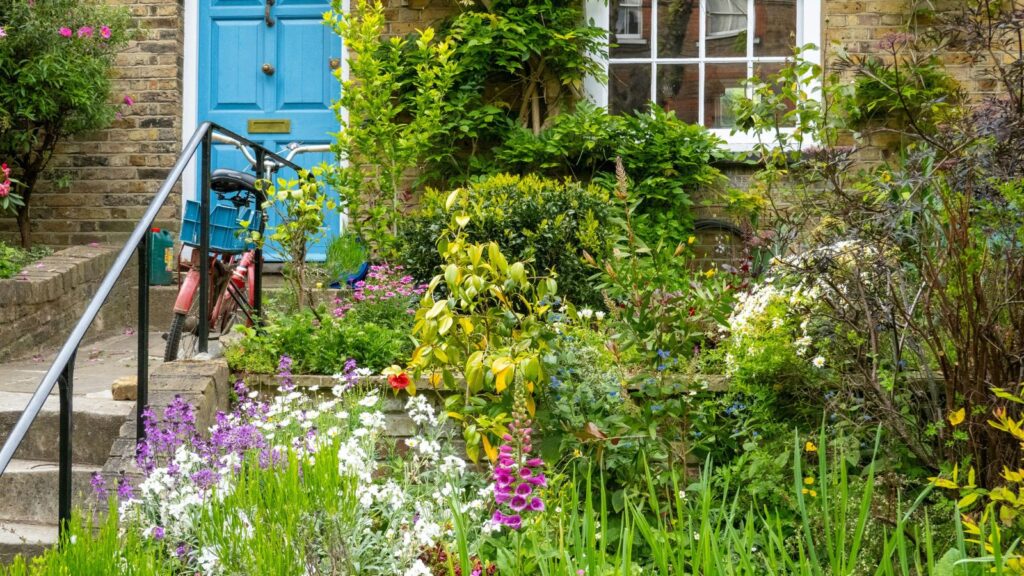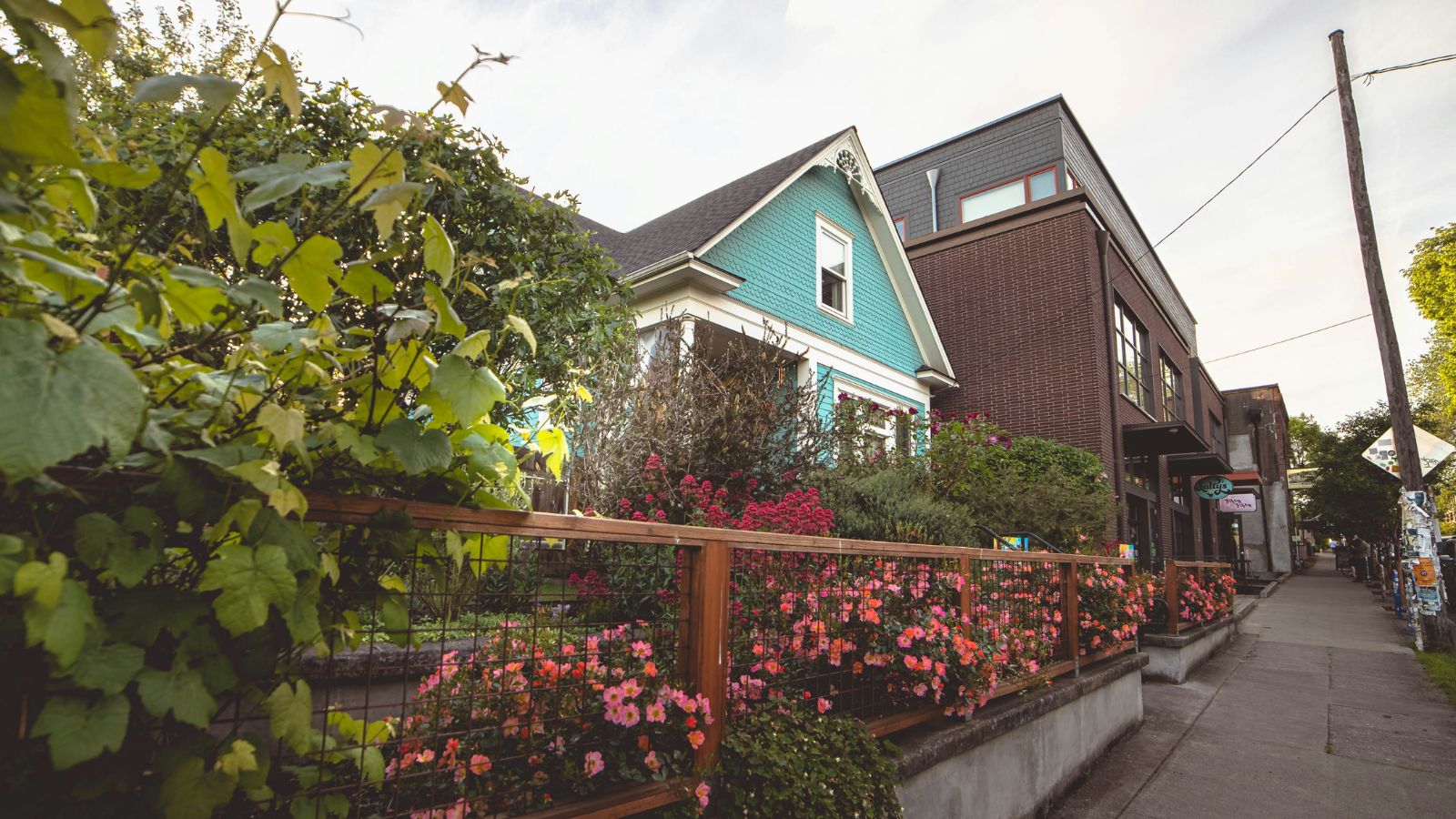These US Cities Pay You $2,000 to Turn Your Lawn into a Meadow
Most of us keep a simple squared lawn because of the HOA or the rules where we live. Several of us want to plant petunias and daisies and call it a day, but we can’t. If you’re lucky enough, your state or city might pay you to convert your lawn into a meadow.
Nature and lawns

A recent experiment by the University of Cambridge revealed that despite the well-manicured intentions of lawns, they do not create the same environment for organisms to thrive in as meadows. Meadows allow multiple habitats to co-exist, stabilizing nature, so more and more cities are gradually moving toward a meadow-friendly direction.
Lewisville, Texas

You wouldn’t expect Lewisville, of all cities, to adopt a meadow-friendly initiative, especially since it’s generally been fond of lawn-scaping. But the city is slowly building its way to a meadow-friendly future, with the authorities in Dallas suburbs actively encouraging residents to take initiative. At the moment, the city hasn’t come up with specific funding, but it seems possible in the future.
Central New York

Amazingly, eligible residents in Central New York can benefit from a $40,400 grant to turn their lawn into a meadow. This was only possible thanks to the Central New York Community Foundation, which set up the grant with the help of ESF. It’s not only the loss of grasslands and meadows that’s prompting this change; the region sports Skaneateles Lake, which is being actively damaged by the chemicals used in lawn management.
Baltimore, Maryland

Baltimore’s waterways are a direct and long-held victim of industrial pollution, which is increasingly worsened by chemicals used in lawn management. This is why the city has been working on initiatives to manage irrigation healthily and improve surrounding areas. These multilayered projects are funded and handle everything, from simple lawn renovations to significant tasks.
California

California has entered a state-wide initiative to tackle droughts and is offering a rebate to all residents who spent a bit too much on lawn management. The droughts aren’t the only reason; maintaining a lawn in such conditions will be too challenging. Residents can expect $2+ per square feet for rebates, depending on the city you’re residing in.
Colorado

Colorado’s plan to curb lawn management involves an initial budget of $2 million, which might even be expanded beyond imagination. This is because Colorado is one of the few states with nearly 40% of the water being redirected to outdoor irrigation. The plan is to help residents embrace a meadow-yard that would require less irrigation and naturally boost the environment.
Fayetteville, Arkansas

Sometimes, unkempt lawns get a bit more than they asked for. Residents in Fayetteville have been seeing wild invasive species creep up to their front doors, so local authorities are collaborating to help them. The Native Plant Initiative is offering a free lawn cleanup, with residents qualifying for the weed picking depending on the condition of their lawns. In return, citizens will be provided with native plants to encourage a healthier habitat.
Minnesota

Started in 2019, the state of Minnesota has set aside close to $900,000 to encourage residents to embrace a more carefree yard setting. The state made this decision after its native bee species started suffering a population loss, and the state is actively working to improve the bee’s chances of survival. Apart from the fund, the state is also encouraging residents to plant wildflowers to boost pollination.
Missouri

Although the state has yet to come up with a definite fund, it is assisting lawn owners with healthy conversion. Aside from implementing tips like letting the plants grow wild and planting local species, the state is also offering native plants for free. This will allow residents to weed out invasive species and replant native ones actively. It will make the area safe again for birds, bees, and the vast population of monarchs.
Portland, Oregon

Although the city isn’t actively working on a budget to weed out old lawns, it is allocating resources to healthier water usage. The Clean River Rewards program offers discounts on utility bills for qualified residents—these discounts include slashed prices on properties that sustainably manage stormwater and utilize it to water their lawns. The small step is inadvertently encouraging healthier and wilder yard growth.
Richmond, Virginia

In a series of multiple projects, Richmond is actively moving toward a sustainable and healthier future by offering incentives to conserve energy. Through a Commercial Area Revitalization Efforts program, the city also encourages planting native species, installing rain gardens, and other steps. Although it’s a relatively minor step at the moment, the city will eventually curb its lawns.
Albuquerque, New Mexico

New Mexico is one of the few states offering rebates for xeriscaping, a process where meadows and native species actively replace lawns. Albuquerque is one of the few cities where eligible residents can benefit from up to 75 cents per square foot of lawn removal. Locals are also encouraged to plant native species and might even see an empty water bill if they remove enough lawns.
Shoreline, Washington

Shoreline’s Surface Water Utility offers the Soak It Up Rebate program, where citizens can enjoy up to $2000 if they ditch their lawns and install a rain garden. Such systems actively encourage native plant growth, allowing the lawn to grow out and inviting native species to make themselves at home. Additionally, they hope to reduce pollution and boost pollination.
Tucson, Arizona

A water-harvesting system allows your lawn to grow out and essentially transform into a gorgeous meadow, but Tucson’s Water Rainwater Harvesting Rebate requires attending a class, an online application, and a plan to qualify. Once through, residents can get up to $2000 reimbursed cash for removing old-fashioned water systems and embracing the rainwater system.
Pennsylvania

The Department of Conservation and Natural Resources offers funds to transform your well-manicured lawn into a well-maintained meadow if you live in Pennsylvania. The decision comes after a long battle against dwindling water and air quality, which will improve after multiple homeowners grow meadows. This is also why the state is allowing funds and resources, close to $2000-$5000, to be allocated toward meadowscaping.
14 Natural Attractions That Outrank Yellowstone in Popularity

14 Most Popular Natural Attractions in the U.S.
16 Forgotten American Islands You Might Not Have Heard Of

Emese Maczko is a travel blogger behind Eco Lodges Anywhere. Having explored several destinations around Europe, the US, Indonesia, and Australia, and resided in Germany, the United Kingdom, and Luxembourg, Emese possesses a keen understanding of diverse cultures and an appreciation for the beauty of each destination she visits. She advocates for sustainable travel and ecotourism.


